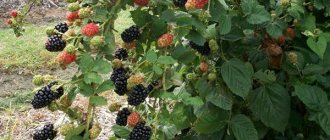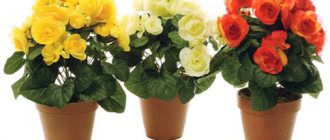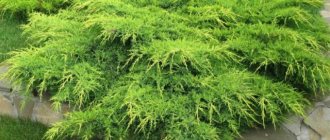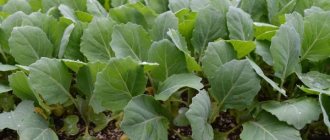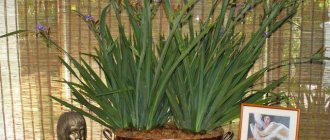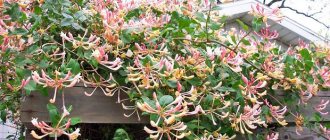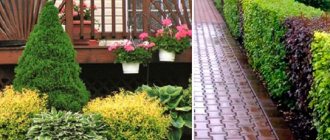Description of the plant
"Astra" means star in Greek. The name fully reflects the beauty of these flowers and their position among other plants in the garden - they are real stars. They sparkle on the ridges with countless colors with yellow centers in the entire range of seductive, capricious shades of purple, pink, and red. Among the cultivated species and varieties, you can find many varieties with flowers of different shapes, sizes, and heights.
It is difficult to calculate the advantages of these wonderful plants. They are extremely hardy and easy to grow - great for novice gardeners. The grace and simplicity of flowers make asters fit perfectly with other plants. They can be found in country houses, garden plots and in modern gardens of famous designers. These plants bloom beautifully and abundantly, so it is worth making beautiful flower beds and flower beds from them. An impressive aster corner can be designed so that the plants will bloom until frost.
According to flowering time, perennial asters are divided into:
- spring (for example, alpine);
- summer (for example, chamomile);
- autumn (New Belgian, New England, bush).
Video about the best way to plant asters and how to care for them
This video gives advice from a gardener on how best to plant flowers in your garden. What are the best conditions to create for them, and how to care for them.
In general, almost everything that our article is about today, only more concisely. I hope that the video will be quite useful for you in this regard.
It also briefly talks about what varieties exist and how best to plant them depending on this. There are also many beautiful photographs of this autumn beauty blooming.
Briefly about cultivation and care
Most asters are perennials, although there are exceptions, such as the annual Chinese aster.
- Winter hardiness. Almost all types of asters are hardy, but in winter, for example, alpine asters, it is worth covering them with branches of coniferous trees, then the bush will not freeze.
- Rejuvenation. Perennial varieties unfortunately die off every few years. When we notice a lot of drying out of the middle part of the flower cluster, it is a sign that the aster is moving away. Therefore, it is important not to forget about rejuvenating the bushes. The plant needs to be dug up, the young parts separated and planted in another place. If flowers are planted on weak soils, rejuvenation should be done every 2-3 years.
- Reproduction. Asters can be propagated in April or May. The plant is dug up, divided into several parts and planted.
- Diseases of aster. Although the plant is not demanding, it is sometimes affected by diseases:
- powdery mildew is a fungal disease; white powdery flakes appear on young leaves and shoots;
- leaf spotting - watery, round or oval brown spots appear, diseased leaves die;
- gray mold - caused by the fungus Botrytis cinerea, appears in spring or autumn, watery, brown, fast-growing spots are visible on above-ground parts of the plant, parts of plants or entire plants die.
This is brief information about growing asters; you can read more in detail in the article on caring for asters.
Types of asters - description and photo
The genus includes more than 200 species. Let's look at the most popular ones.
Shrub
Symphyotrichum dumosum - this species is also called dwarf aster. Quite popular due to its decorative value. The flowers are blue-brown, lilac, collected in baskets. Blooms from August to October. In our climate they usually reach a height of 20-50 cm. Suitable for:
- discounts;
- planting on slopes;
- planted along the walls.
Shrub aster, photo
Alpine
Aster alpinus - blooms earlier than everyone else, the flowers of the species appear in June, pleasing to the eye until the end of July. It is grown as an ornamental plant in rocky gardens. An important feature is high frost resistance. The plant reaches a height of 30-40 centimeters.
Perennial alpine aster, photo
New Belgian
Symphyotrichum novi-belgi is a profusely blooming harbinger of autumn. This is a very famous perennial species of asters. Depending on conditions and variety, plants reach a height of up to 160 centimeters. Flowers appear at the end of August and delight with their unusual charm until November.
Remember! An important feature of growing this species is systematic feeding with various fertilizers.
New Belgian aster, photo
New England (American)
Symphyotrichum novae-angliae is also called American small-flowered Symphyotrichum. The plants have a rigid, long, partly woody stem and reach a height of up to 2 meters. The pink or blue flowers close during rain, in the evening and immediately after cutting. The latest flowering period is September-November.
New England aster – photo
Chamomile (wild, steppe, Italian)
Aster amellus - quite rarely cultivated, less known, blooms from July to September. This perennial flower is ideal for planting in garden beds. It grows very slowly and can remain in one place for many years without the need to replant. Reaches a height of 80 centimeters.
Italian aster – photo
Tatar
Aster tataricus is a perennial species of asters native to the Far East that will appeal to lovers of zest in floriculture. The species reaches a height of 2-2.5 meters. Blooms in late autumn.
Chinese (Callistephus)
Callistephus chinensis is the only annual or biennial aster. Depending on the variety, the bushes reach a height of 15-10 centimeters. Botanically, they belong to different plant families. The flower is double, the bush blooms very profusely. This species includes the plant Aster pompom, characterized by a dense cluster of petals. The annual Astra Pinocchio is popular.
Naked (smooth)
Aster laevis is a perennial aster that produces many inflorescences with broad leaves and large violet-blue flowers. Resistant to powdery mildew.
Lanceolate
Symphyotrichum lanceolatum is a perennial species belonging to the Asteraceae family. Originally from North America. Presented in Europe, New Zealand, and the Canary Islands.
Bessarabian
Perennial asters Aster bessarabicus are also called false Italian. The flowers are heather-colored with a yellow-brown center. The height of the bush is up to 70 centimeters.
Heather and peony
The species Aster ericoides is native to North America. Plant height is 60-100 cm. Quite frost-resistant, can withstand frosts up to 30 degrees. There are ground cover varieties that beautifully cover the area with a flowering carpet.
Heather aster – photo
The peony aster is an annual plant characterized by a beautiful double inflorescence reminiscent of a peony inflorescence.
Planting aster seeds
Also check out these articles
- Apricot variety Black Prince
- What is Nucleus for bees
- Strawberry variety Monterey
- Tomato variety Hali-Gali F1
Although there are many methods for propagating asters, they are most often grown through seeds. This method is especially recommended for propagating alpine aster. Sow seeds for seedlings in March. If you don’t want to grow seedlings, you can immediately sow them in open ground. In the southern regions this is done in early April, in the middle regions by mid-April, and in the northern regions - closer to May.
Photo of aster: planting and care
Important!
If return frosts begin after sowing the seeds, the soil on the plantings is well mulched or covered with film so that the seeds do not freeze.
It is best to sow perennial asters in loamy soil. Sandy soil, as well as heavy, clayey soil, is not suitable for them, because in the first case, there will always be not enough water, and in the second, there will be too much of it. Asters produce rich flowering exclusively in sunny areas, while in the shade they produce more lush foliage. It is also worth mentioning that tall perennial asters are afraid of drafts.
As for the sowing method, there is nothing difficult here. Asters are sown in a sparse single file in a furrow to a depth of 3 cm. After sowing, it is necessary to ensure that the air temperature is about +15 degrees, then seedlings will appear faster.
The best varieties
Varieties are divided into spring, summer and autumn, as well as according to other characteristics. Let's look at them.
Varieties that bloom in autumn and late summer
The perennial asters grown in our gardens are mainly varieties of three species:
- New England,
- New Belgian,
- shrubby
They originate from North America, where they grow on grassy prairies, forest edges and in thickets along the banks of water bodies. Among the unusual variety of varieties, it is easy to choose those that are suitable for each garden.
The most popular perennial varieties of the New Belgian species are tall, forming dense clusters with dark green leaves. You can even find them in abandoned rural gardens and on river banks. Of the nearly hundred varieties grown, the following stand out: those listed below.
Autumn varieties of the New Belgian species
Below are the most interesting representatives of this species.
Table. Perennial Belgian varieties
| Variety | Flower color | Photo |
| Little Blue Boy | dark blue | |
| Marie Ballard | light blue | |
| Patricia Ballard | carmine | |
| Plenty | lavender blue | |
| Astra Milady (Miledi) | various colors | |
| Astra Royal Ruby | crimson | |
| Royal Blue | lilac | |
| White Ladies | white | |
| Winston Churchill | carmine | |
| Fellowship | pink with large flowers | |
| Freda Ballard | red | |
| Dauerblau | blue |
New England varieties
This is an extremely attractive group of perennial plants. They are easily recognized by their light green, narrow leaves and stiff stems covered with coarse hairs. The varieties of this group are distinguished by their height and pleasant compactness.
Important: New England aster varieties do not spread and can be safely planted next to other perennials without fear of dominating them.
The flowers look extremely delicate thanks to the numerous narrow petals with beautiful and pure colors.
Table. Leaders among this group of perennial varieties
| Variety | Flower color | Photo |
| Andenken an Alma Pötchke | rose red | |
| 'Barr's Blue' | violet | |
| Barr's Pink | pink | |
| Septemberrubin | red | |
| Ash House (Purple Dome) | eggplant |
Shrubs
These are the lowest bushy perennial asters. Cultivated varieties originated from intersection with New Belgian ones. Low and compact plants quickly become groundcovers, creating attractive carpets. They are used to create ridges and as ground cover crops in rocky gardens.
Table. The most valuable varieties of perennials of this type
| Variety | Flower color | Photo |
| Alice Haslam | pink carmine | |
| Herbstgruss von Bresserhof | hot pink | |
| Lady in Blue | blue | |
| Prof. Anton Kippenberg | lilac | |
| Silberblaukissen | blue | |
| Snowsprite | white |
New blue variety Bluebird
Among the new perennial varieties, it is worth paying attention to Bluebird or Bluebird - a variety of naked aster with large violet-blue flowers and wide leaves. The plant blooms profusely and is quite resistant to powdery mildew. It grows and creates large clusters of flowers.
With decorative leaves
Of the varieties with decorative leaves, the side-flowering aster (Aster lateriflorus) is recommended.
Popular perennial varieties:
- Prince
- Lady in Black.
The varieties are distinguished by the purple color of their leaves and shoots and are decorative even when they do not bloom. Their dark bushes look great next to plants with blue, silver, and golden leaves.
Perennial heather varieties (Aster ericoides) have attractive foliage. This species has highly branched shoots and leaves that are narrow, like needles. It blooms in October, covered with many small white flowers, decorating the garden until frost.
Includes varieties of asters with flowers:
- blue – Bluestar;
- pink – Esther.
Heather aster loves dry and sunny places.
The sedum-leaved Aster (Aster sedifolius) or as it is called the “star”, “star” variety Nanus (Nanus) native to southern Europe has similar features. Its numerous branches, covered with narrow leaves, create attractive cushions. The plant blooms with light purple star flowers.
Needle aster
This perennial variety is very popular among gardeners due to its decorative flower with thin needle-shaped petals. The plant can be affected by fusarium and requires special care.
Popular varieties:
- Gala,
- Lyme.
Little-known varieties
A rare perennial Italian (daisy) species blooms from July to September. Chamomile or Italian aster likes sandy and dry soil. Ideal for planting ridges. The plant grows slowly and can remain in one place without replanting for many years. Includes more than 40 varieties.
The most popular varieties of chamomile asters:
- purple-blue King George;
- light blue Blütendecke;
- blue Lac de Géneve and Rudolf Goethe;
- dark purple Violet Queen;
- a very valuable, but not frost-resistant hybrid, Astra Frikart (Aster x Frikartii);
- Monk (Mönch) - blooms all summer until late autumn, producing numerous purple flowers.
Some asters look very atypical. Looking at the North American species of Aster divaricatus and Aster cordifolius, it is difficult to think that they are one group of plants. They form low bushes with light green, longitudinal heart-shaped leaves. They bloom in late summer, producing numerous small flowers collected in loose inflorescences. It is better to plant them in large, dense groups.
It is worth knowing that they tolerate drought well and grow even in partial shade. They can be successfully used as cover species planted under tree canopies and under shrubs.
Asters blooming in spring and early summer
Not all asters bloom in late summer and fall. In gardens it is also worth growing species that bloom in spring at the turn of May-June.
Alpine
The most popular Alpine aster (Aster alpinus) is a perennial plant growing on limestone rocks in the Tatras and Pieniny Mountains. The plant produces low rosettes from which short stems bearing individual flowers grow. Depending on the variety, alpine aster flowers are pink, blue, purple, and white.
Tongolian or bluish
Aster tongolensis or Tongolian, Tongolian, blueish comes from China. The plant forms a compact flower field. The purple-blue flowers have a distinctive orange-yellow center.
2 varieties are popular:
- Berggarden,
- Wartburgstern.
Both varieties love sunny places. It is better to plant them on a ridge among low perennials, in rocky gardens.
Low growing varieties
Low-growing varieties of bushy perennial aster can be used to decorate the edges of ridges and use them as ground cover plants. These varieties also look good among tufts of grass.
Interesting varieties of low-growing asters:
- blue - Variegata;
- medium-growing variety - smooth Bluebird;
- narrow-leaved - Nanus.
Alpine perennial asters - spring plants
Despite the fact that this crop is considered an autumn crop, some varieties of perennial aster can delight you with flowering at the end of spring. These include alpine asters. They differ not only in their early flowering. For the most part, the plants are compact in size - beautiful lush bushes grow up to a maximum of 50 cm. In addition, their flowering usually lasts on average about a month.
Some of the prominent representatives of the group are:
- alpine blue;
- aster Pink.
Alpine blue aster
Alpine blue, unlike autumn asters, blooms in the first half of summer, for which it is called spring. The height of the bush does not exceed 60 cm, while the inflorescences themselves are large. The diameter of the flower is 6 cm, and the color is dominated by lilac-blue tones. The yellow core is clearly visible in the center of the bud.
The variety is most similar to chamomile - its flowers form at the tips of the stems, one on each.
Astra Pink
The lush and dense perennial will delight you with its modest size - only 30 cm in height. Actively branching stems are covered with beautiful green foliage. The lower leaves have an oblong shape, and those that grow on the stem itself are smaller and narrower. Pink blooms in May. The buds are medium-sized (only 5 cm in diameter), terry, bright pink. The aster blooms for a month.
The Pink aster bush goes into winter green, with leaves.
How to choose neighbors?
Tall varieties can form a middle story in a flower bed or grow among other perennial plants. Since New England and New Belgium species tend to drop their lower leaves, it is good to fill the space below with other plants:
- Japanese anemones;
- late varieties of phlox;
- Echinacea purpurea;
- golden dahlias;
- marigolds;
- perennial ornamental grasses.
Low varieties look interesting next to plants with silvery leaves, for example:
- catnip;
- wormwood;
- with splinters.
Varietal characteristics of cultivation
- Position. All types of asters require sunny and ventilated positions. Lush-growing New England, New Belgian and bush species require permeable, fertile, moist soils. To look healthy and bloom profusely, they should be fertilized and watered throughout the season. On dry and poor soil, the lower leaves are quickly lost.
- Soils. Other species can be planted in weaker soils. This is especially true for species with narrower leaves, such as narrow-leaved aster, heather and freecarta. They prefer permeable, drier substrate.
- Frost resistance. All species, with the exception of Aster Frikarta, are completely resistant to frost. Alpine and Tongol asters growing in a rock garden should be covered with coniferous branches for the winter.
- Reproduction. Asters reproduce by dividing the bush in April-May. Shrub and New Belgian varieties grow the fastest. In order for plants to grow lushly and abundantly, they need to be divided every 2-3 years. New England varieties can be divided less frequently.
- Garter. Tall New England and New Belgian varieties require garter.
- Diseases. New Belgian and bush asters are susceptible to powdery mildew. To reduce the risk of infection, ensure good air circulation between individual bushes by planting plants far enough apart (at least the width of the bush to allow easy passage between bushes). Plants that grow too densely need to be provided with access to the sun by removing some shoots.

